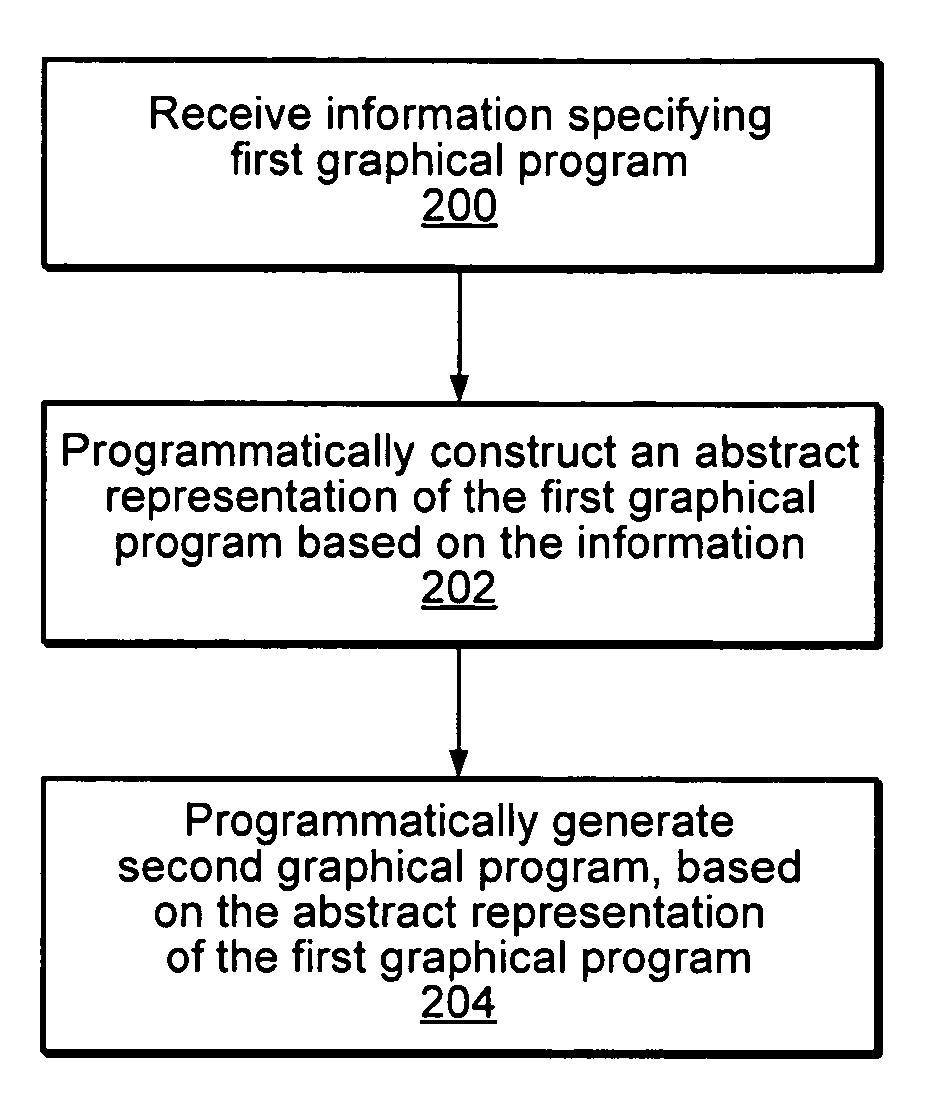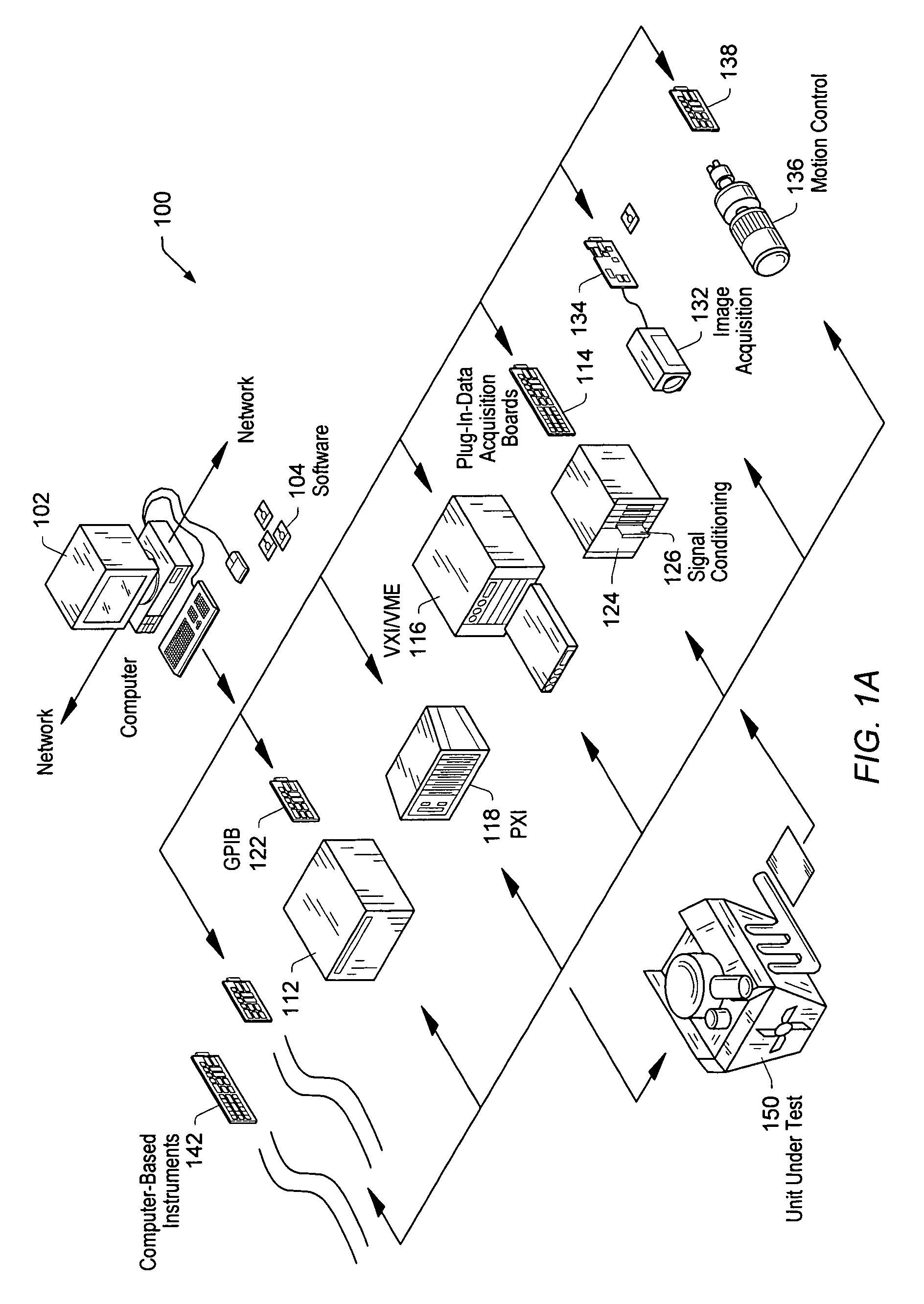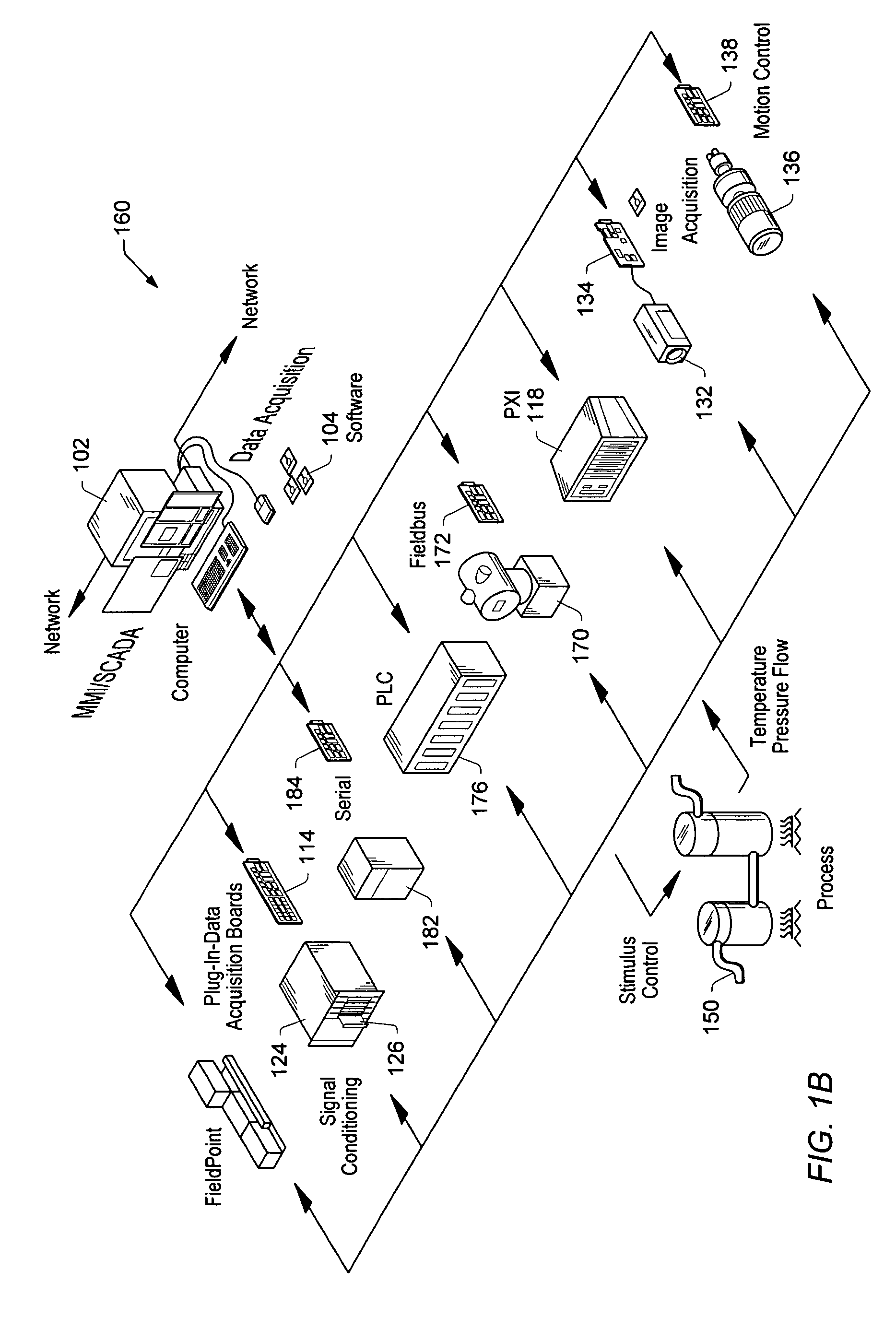Converting a first graphical program into an intermediate abstract representation for new graphical program generation
a technology of abstract representation and graphical program, applied in the field of graphical programming, can solve the problems of user programming skills and ability to interact with the computer system often becoming a limiting factor in the achievement of optimal utilization of the computer system, complex task of programming a computer system to model or implement a process often being further complicated, etc., to achieve more deterministic performance
- Summary
- Abstract
- Description
- Claims
- Application Information
AI Technical Summary
Benefits of technology
Problems solved by technology
Method used
Image
Examples
Embodiment Construction
Incorporation by Reference
[0048]The following reference is hereby incorporated by reference in its entirety as though fully and completely set forth herein:
[0049]U.S. Pat. No. 5,481,741 titled “Method and Apparatus for Providing Attribute Nodes in a Graphical Data Flow Environment,” issued on Jan. 2, 1996.
[0050]U.S. Pat. No. 7,210,117, filed as application Ser. No. 09 / 745,023 titled “System and Method for Programmatically Generating a Graphical Program in Response to Program Information” filed on Dec. 20, 2000, whose inventors were Ram Kudukoli, Robert Dye, Paul F. Austin, Lothar Wenzel, and Jeffrey L. Kodosky.
[0051]U.S. Pat. No. 7,159,183, filed as application Ser. No. 09 / 518,492 titled “System and Method for Programmatically Creating a Graphical Program” filed on Mar. 3, 2000, whose inventors were Ram Kudukoli, Robert Dye, Melanie Jensen, and Yumiko Kawachi.
[0052]U.S. patent application Ser. No. 09 / 595,003 titled “System and Method for Automatically Generating a Graphical Program ...
PUM
 Login to View More
Login to View More Abstract
Description
Claims
Application Information
 Login to View More
Login to View More - R&D
- Intellectual Property
- Life Sciences
- Materials
- Tech Scout
- Unparalleled Data Quality
- Higher Quality Content
- 60% Fewer Hallucinations
Browse by: Latest US Patents, China's latest patents, Technical Efficacy Thesaurus, Application Domain, Technology Topic, Popular Technical Reports.
© 2025 PatSnap. All rights reserved.Legal|Privacy policy|Modern Slavery Act Transparency Statement|Sitemap|About US| Contact US: help@patsnap.com



